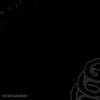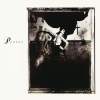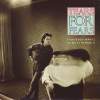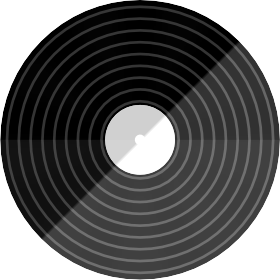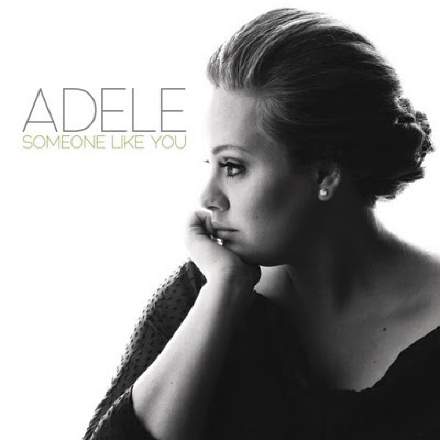
More impressive to me than Adele reaching the top of the US album charts is her feat of taking this sparsely arranged vocals-and-piano number to the top of the UK singles chart. While its success clearly hinges on her outstanding vocals, what caught my ear was how well the production team had managed to contrast the vocal with the piano, thereby setting the former in high relief. The understated, repetitive piano part itself is partly responsible, quickly receding from the listener’s attention to form a passive background against which Adele’s more emotional performance unfolds. Note also the carefully judged dynamics, supporting Adele with commendable restraint as she really opens up, and supplying subtle extra momentum where appropriate — the wonderfully measured build through the second pre-chorus from 2:20, for example, or the little lead-in to verse two at 1:49 (the latter nudged forward by the mixer automation, I suspect). The rebuilding of the figuration from 3:24 into the final chorus is also nicely paced, and the additional bass-note repeats in the final chorus give a little more lift, without the need to trespass on the vocal by pushing the volume or pitch of the treble notes.
The engineering can also claim credit too, by wrapping the piano’s sonics neatly around the vocal. For a start, the stereo image is remarkably wide (given that the part uses less than a half of the instrument’s available pitch range), and while this does compromise the mono compatibility (check out the third chord, at 0:07, in particular), it also keeps the piano out of the way of the vocal. The piano’s frequency balance also features recesses at 150-300Hz and 4-8kHz, which avoids its competing with the voice’s warmth and presence frequencies, both of which powerfully communicate Adele’s nearness and intimacy, placing her well out in front of the piano.
And speaking of distance cues, reverb has also been very intelligently used. Compare the natural-sounding bloom around the piano sound with the lead vocal’s more artificial treatment (sounds like some kind of plate device to me, judging by the section at 3:34-3:50, where it’s most audible). The spatial realism of the piano reverb distances it from the listener, as well as emphasising its sense of width, while the vocal reverb’s narrower and less realistic tail remains more distinct from the singer’s voice, providing sustain, tonal enhancement and a vintage character, but all without unduly pulling the dry sound back into the mix. The dynamics processing applied to the two main protagonists also feels quite different. Lots of nice, furry compression character has been lent to the vocal, as well as enough gain-reduction to give it a bit of that ’nose pressed up against the glass’ feeling, which is all entirely in keeping with its status in the track. The piano, on the other hand, has been treated much more neutrally, and I’m guessing that parallel compression may well have played a role here, given the degree of sustain and gain-control achieved without obvious pumping artifacts.
All that great stuff notwithstanding, there are a couple of small things that niggle me. The first is that the ‘air’ of the live vocal mic has been audibly removed in the intro, before the second verse, before the third chorus, and in the outro. For me this rather undermines the impression that her performance is truly raw and immediate. The breath at the start of each verse has also been removed, which also feels a bit odd given how much Adele’s breath noises contribute to the expression elsewhere. Perhaps the slightly startling unheralded effect of the vocal entry was considered beneficial to get the listener’s attention at those points in the song? I don’t really buy that explanation myself, though, and I can’t help thinking that a bit of background noise or an extra breath could easily have been patched in to make the tampering less obvious.
The other thing that grates on me a little is a resonance that appears during the loud choruses. The best example can be heard in the second chorus on the word ‘you’ at 2:41. The specific combination of the note pitch, the ‘oo’ vowel, and the forceful delivery causes a harmonic at around 4080Hz to suddenly leap out of the balance, making the vowel a bit too harsh-sounding for my taste, especially at higher playback volumes. This is by no means an uncommon occurrence whenever any vocalist gives their sound a bit of extra welly, but I was a bit surprised that it survived to the final record in this particular case, given that the mix engineer was Tom Elmhirst. When he was interviewed for this Sound On Sound magazine article, he mentioned dealing with exactly this kind of thing using notch filtering when working on Amy Winehouse’s ‘Back To Black’. Maybe it’s just me…
Overall, I think it’s fantastic news for music in general that Adele’s album 21 this record is currently laying waste to the worldwide charts so comprehensively. It’s interesting, though, that while much publicity seems to have focused on the production input of Rick Rubin on the record, the first two singles aren’t actually his productions – they’re Paul Epworth (‘Rolling In The Deep’) and Dan Wilson respectively. That said, I have to say that (for me at least) the Rubin productions really jump off the record compared with the others. ‘He Won’t Go’ completely knocked my socks off (what a funky drum/bass sound!), and the others are great too: ‘Don’t You Remember’, ‘One And Only’ (respect for the super-bold piano tone decision there!), and ‘Lovesong’.
I’m also thinking that Tom Elmhirst must be laughing all the way to the bank. First Amy Winehouse’s Back To Black and now this. Ker-ching! :) His mix of Fiona Apple’s ‘Sleep To Dream’ still kills me too – I vividly remember first hearing that song on my way out of a record shop and immediately turning on my heel and marching straight back up to the counter to buy a copy! Having said all that, though, he’s not credited on the Rubin-produced numbers – those feature Andrew Scheps mixing and Greg Fidelman recording.






